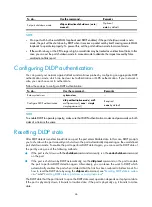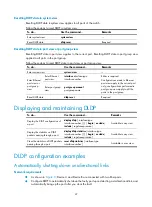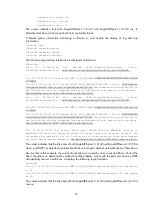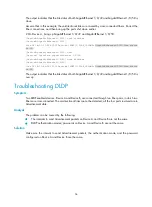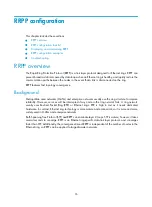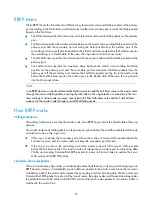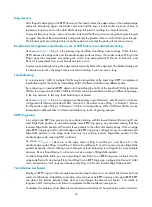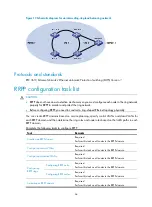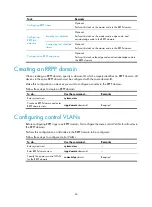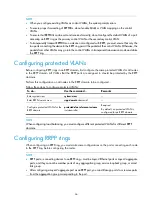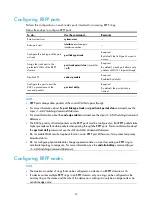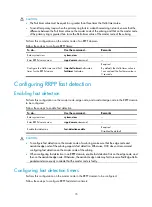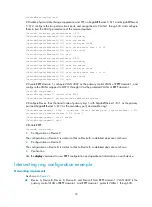
59
RRPP timers
When RRPP checks the link state of an Ethernet ring, the master node sends Hello packets out the primary
port according to the Hello timer, and determines whether its secondary port receives the Hello packets
based on the Fail timer.
•
The Hello timer specifies the interval at which the master node sends Hello packets out the primary
port.
•
The Fail timer specifies the maximum delay between the master node sending Hello packets out the
primary port and the secondary port receiving the Hello packets from the primary port. If the
secondary port receives the Hello packets sent by the local master node before the Fail timer expires,
the overall ring is in Health state. Otherwise, the ring transits into Disconnect state.
•
The Fast-Hello timer specifies the interval at which the master node sends Fast-Hello packets out the
primary port.
•
The Fast-Fail timer specifies the maximum delay between the master node sending Fast-Hello
packets out the primary port and the secondary port receiving the Fast-Hello packets from the
primary port. If the secondary port receives the Fast-Hello packets sent by the local master node
before the Fast-Fail timer expires, the entire ring is in the Health state. Otherwise, the ring transits
into the Disconnect state.
NOTE:
In an RRPP domain, a transit node learns the Hello timer value and the Fail timer value on the master node
through the received Hello packets, ensuring that all nodes in the ring network are consistent in the two
timer settings. A transit node, however, cannot learn the Fast-Hello timer value and the Fast-Fail timer
value set on the master node through received Fast-Hello packets.
How RRPP works
Polling mechanism
The polling mechanism is used by the master node of an RRPP ring to check the Health state of the ring
network.
The master node sends Hello packets out its primary port periodically. These Hello packets travel through
each transit node on the ring in turn.
•
If the ring is complete, the secondary port of the master node will receive Hello packets before the
Fail timer expires, and the master node will keep the secondary port blocked.
•
If the ring is torn down, the secondary port of the master node will fail to receive Hello packets
before the Fail timer expires. The master node will release the secondary port from blocking data
VLANs and sending Common-Flush-FDB packets to instruct all transit nodes to update their own
MAC entries and ARP/ND entries.
Link down alarm mechanism
When a transit node, edge node, or assistant-edge node finds that any of its own ports belonging to an
RRPP domain is down, it immediately sends Link-Down packets to the master node. Upon the receipt of
a Link-Down packet, the master node releases the secondary port from blocking data VLANs, and sends
Common-Flush-FDB packet to instruct all the transit nodes, the edge nodes and the assistant-edge nodes
to update their own MAC entries and ARP/ND entries. After each node updates its own entries, traffic is
switched to the normal link.


